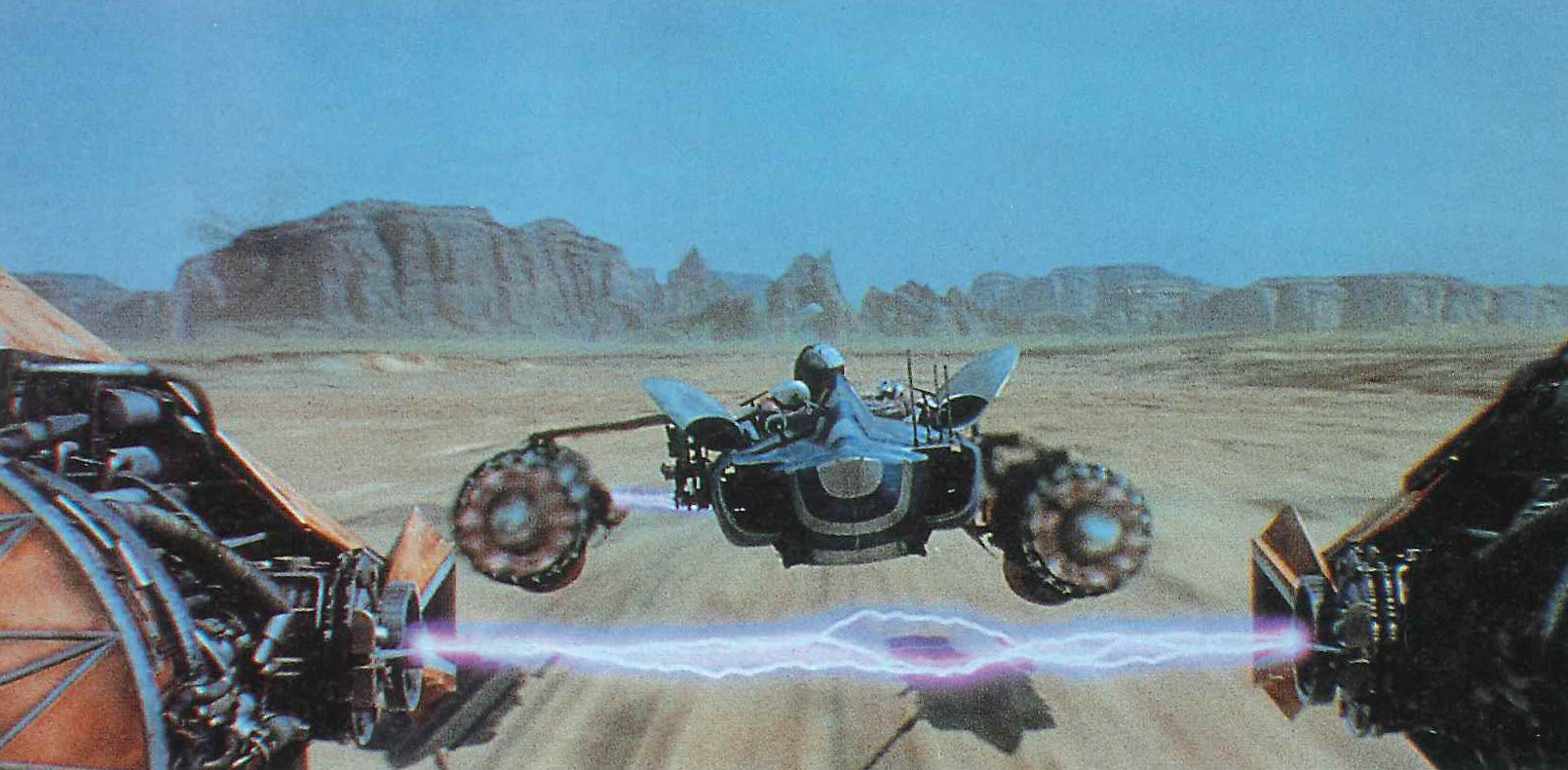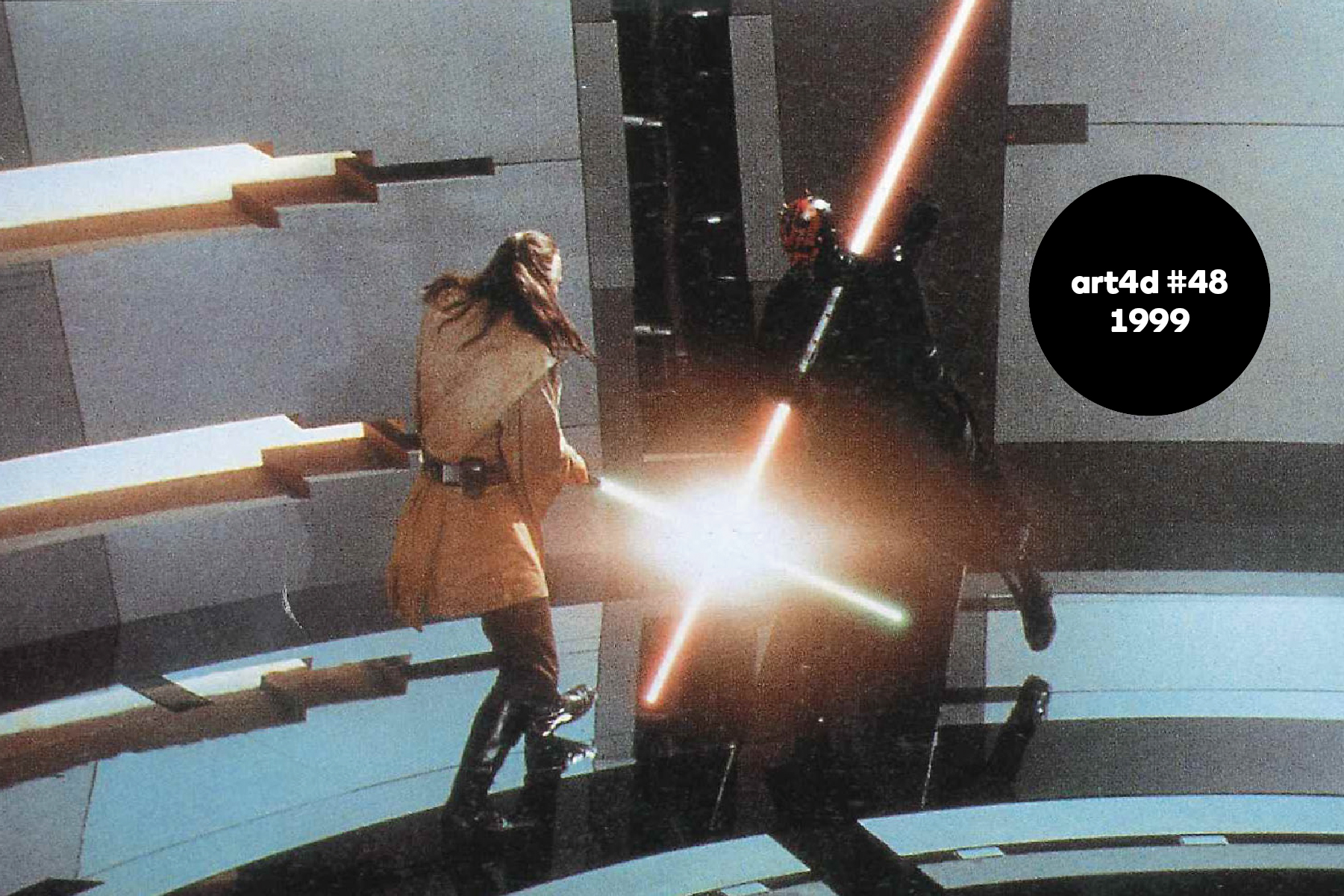ART4D WILL TAKE YOU BACK TO READ THE ARTICLE IN 1999 ABOUT COSTUME DESIGN AND ART DIRECTION OF STAR WARS: EPISODE I, WHICH IS TOTALLY DIFFERENT FROM THE ORIGINAL TRILOGY
วันที่ 4 พฤษภาคมของทุกปี ถือเป็นวันสตาร์วอร์ส ที่แฟนๆ ของภาพยนตร์ชุดนี้ได้หยิบเอามาจากวลีดังอย่าง “May the force (fourth) be with you” ในโอกาสนี้ art4d จะขอพาย้อนกลับไปอ่านบทความในปี 2542 เกี่ยวกับงานออกแบบเครื่องแต่งกายและอาร์ตไดเร็คชั่นของ Star wars: Episode I ซึ่งมีความแตกต่างไปจากไตรภาคก่อนหน้าโดยสิ้นเชิง

(For English, please scroll down)
Star Wars ไตรภาคแรกเป็นเรื่องของ Luke Skywalker เด็กหนุ่มบ้านนอกผู้กลายเป็นวีรบุรุษ จากการต่อสู้ห้ำหั่นกับกองทัพของจักรพรรดิ์ฝ่ายอธรรม และต้องเผชิญหน้ากับ Darth Vader ขุนพลเอกของจักรพรรดิ์ ซึ่งเป็นพ่อของ Luke เองและ Darth Vader คนนี้เองที่กลายมาเป็นตัวเอกใน Star Wars ภาคล่าสุด ใน Episode I, Darth Vader ยังเป็น Anakin Skywalker เด็กอายุ 9 ขวบที่เป็นความหวังของจักรวาลและ Obi-Wan Kenobi ก็เป็นอัศวินหนุ่มผู้เก่งกาจ ตำนานบทแรกของ Star Wars เป็นการติดตามการเดินทางของ Anakin ในการสานฝันของเขา ซึ่ง Anakin จะต้องเผชิญกับความน่าสะพรึงกลัวที่ซ่อนอยู่ในส่วนลึกที่สุดของจักรวาล

ทีมงานคนสำคัญที่ George Lucas ดึงมาร่วมงานด้วยอีกคนคือ Doung Chiang ศิลปินเจ้าของรางวัล Academy Award มารับตำแหน่งเป็นหัวหน้าทีมแผนกศิลป์ให้กับ Episode I, Chiang เป็นแฟนหนัง Star Wars ตัวจริงอีกคนหนึ่ง แต่โจทย์ที่เขาได้รับจาก Lucas คือเขาต้องออกแบบทุกๆ อย่างใหม่หมดโดยไม่ติดกับภาพของ Star Wars ในภาคก่อน Lucas บอกกับ Chiang ว่าต้องการเห็นยานอวกาศที่มีรูปทรงเฉี่ยวๆ มีส่วนผสมระหว่าง Art Nouveau กับ Art Moderne ซึ่งดูเหมือนว่า Chiang จะตอบโจทย์ที่ว่าได้ทั้งหมด “มันดูเหมือนงานเครื่องประดับที่มีฟังค์ชั่นมากกว่ายานอวกาศนะ” Chiang พูดถึงงานออกแบบยาน Star Fighter ของเขา ส่วนยานอวกาศของราชินีนั้น Chiang ตั้งใจให้ดูนุ่มนวลและอลังการกว่ายานทุกลำที่เคยปรากฏอยู่ใน Star Wars ทุกๆ ภาค


George Lucas’ story for Episode I, which takes us to the center of the galaxy and to sophisticated planets whose inhabitants possess majestic wealth, power, political influence and style, necessitated a rich and intricate fashion and costume design. Costume designer Trisha Biggar and concept artist Iain McCaig were chosen by Lucas to bring to life his vision of the world of fashion and costumes for Episode I.
Episode I was shot in England last summer and is currently in post-production at Skywalker Ranch and Industrial Light & Magic in Marin County, California. The film was written and directed by George Lucas, produced by Rick McCallum and stars Liam Neeson, Ewan McGregor, Natalie Portman, and Jake Lloyd. Additional cast members include Ian McDiarmid, Samuel L. Jackson, Terrence Stamp, and Permilla August. Episode I is scheduled to be released in Thailand in June 15, 1999. For all Star Wars fans, we’d like to say “May the force be with you”.
Originally published in art4d #48 April, 1999



